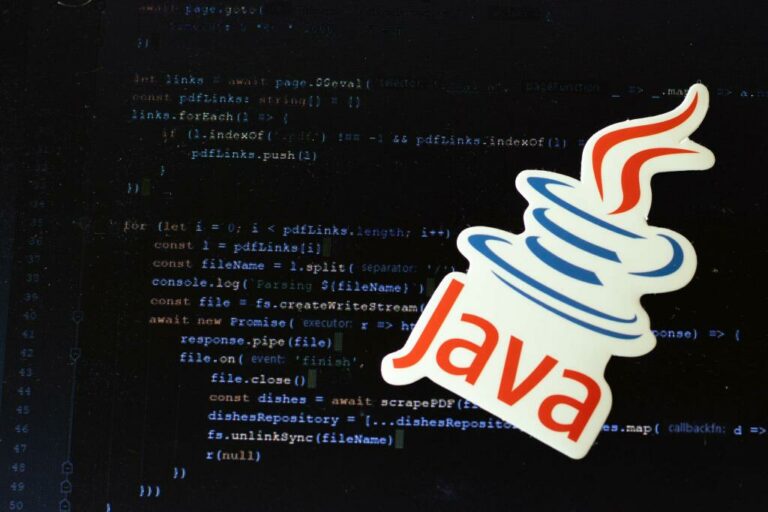Content
Such a high demand for new updates has condensed software development life cycles, pushing organizations to rethink their approach to secure software development. Before being deployed to production, vulnerabilities should be scanned, analyzed, and remedied appropriately across development and integration environments. Use penetration testing and other attack mechanisms to find flaws in pre-production code and suggest areas for improvement. DevOps security can perform tests and tools against production software and infrastructure to find and patch flaws and issues once products are launched into an operational environment. You have no hope of expanding security to DevOps processes without automated security solutions for code analysis, configuration management, patching and vulnerability management, and privileged credential/secrets management. Human error, as well as the resulting downtime or vulnerabilities, are reduced through automation.
Netflix is widely known for its Chaos Monkey tool, which exercises chaos engineering principles. Netflix also utilizes a Security Monkey tool that looks for violations or vulnerabilities in improperly configured infrastructure security groups and cuts any vulnerable servers. Despite the best efforts by software companies, security breaches still occur. Part of the problem is that as software applications grow in codebase scale and complexity, so do the surface areas for security vulnerabilities and exploits. Scalability in the cloud requires embedding security controls on a larger scale.

As a result, dev teams ship insecure applications, security teams burn out, and security becomes a naysayer, negating the acceleration the business is seeking. Development, production, and security teams each have their favorite applications and tools. Merging the teams multiplies the number of tools, some of which serve the same functions. For example, security tools may not support cloud applications, and development tools may not incorporate adequate security testing features. Reducing and standardizing DevSecOps tools promotes a more collaborative development and testing process. It also enables team members to acquire deep expertise in a few tools rather than cursory knowledge of many tools.
Insecurity analysis, static application security testing , software composition analysis , and some form of dynamic testing approaches are commonly utilized. However, combining and reconciling results from diverse vendors’ resources might be problematic. Being a newer concept than DevOps, DevSecOps was coined to emphasize the importance of IT security processes and security automation in the software development lifecycle. While the idea of merging development teams devsecops software development and IT operations teams is not that new, until some time ago security policies were often treated as the job of security teams only. However, the increasing cybersecurity concerns made it necessary to clarify that security controls are a key aspect of continuous delivery and that everyone should be responsible for it, not only dedicated security teams. DevSecOps evolved from DevOps so that teams can quickly release code while maintaining security and compliance.
Automate Early, and Automate Often
DevSecOps introduces security activities early in the SDLC, rather than waiting until the product is released. Security issues can be identified and resolved during the application development process, with development teams performing security tasks independently. As more development teams evolve their processes and embrace new tools, they need to be diligent with security. DevSecOps is a cyclical process, and should be continuously iterated and applied to every new code deployment.

Development teams should also document software security requirements alongside the functional requirements. Software composition analysis can be applied holistically to confirm that any open-source dependencies have compatible licenses and are free of vulnerabilities. A behavioral by-product of this is that developers feel a sense of ownership over the security of their applications, getting immediate feedback on the relative security of the code they’ve written. Cloud means use of newer technologies that introduce different risks, change faster, are more publicly accessible — eliminating or redefining the concept of a secure perimeter.
Aqua Security is the largest pure-play cloud native security company, providing customers the freedom to innovate and accelerate their digital transformations. DevSecOps aims to apply security, including scanning, monitoring, and remediation, across the SDLC. This encompasses all phases—from planning, developing, building, testing, through to release, deployment, ongoing operations and updates.
As everyone gets comfortable with small increments of the process, the scope of implementation can be increased to full scans and tests with entire rulesets. The totality of these efforts ensures that fixing problems are easier and less costly, further preventing additional dependencies such as technical debt. These are critical because most of the aspects of a system’s configuration aren’t easily modified once deployed, with the only option of changing them being through updates to the configuration management repository. These tests are often benchmarked against a list of known high-severity issues such as the OWASP Top 10. This scenario led to the evolution of DevSecOps, to ensure security is emphasized as an integral aspect of a DevOps project.
Developers
Unless you can’t train your existing people effectively or your developers aren’t interested in making the DevSecOps shift, you don’t have to put on your hiring cap just yet. Your development team, which is comprised of people with different skill sets, will receive training on DevSecOps processes and methodologies that should hold well throughout your delivery pipeline. So you’ll be bringing together existing teams—not hiring a new separate team. Acunetix is a web security scanner intended to help developers find vulnerabilities as early in the development cycle as possible.
- DevOps practices are designed to speed and streamline development processes through collaboration and automation.
- A static code analysis tool, SonarQube is free and open-source, with top-quality versions ready to expand on the free version’s basic but operational capabilities.
- Net Solutions is a strategic design & build consultancy that unites creative design thinking with agile software development under one expert roof.
- ThreatModeler continuously monitors threat models for cloud computing environments, notifying users of updates and changes.
- Development, production, and security teams each have their favorite applications and tools.
This ensures the organization doesn’t bite off more than it can chew, especially at the initial stages of DevSecOps implementation. For DevSecOps to flourish, a security mindset and culture need to permeate an organization, especially among the stakeholders and the DevOps team responsible for implementing it. Security issues can bog down developers with fixing time-consuming bugs that would have been easier to resolve if discovered earlier in the process. DevSecOps minimizes or eliminates these bottlenecks, streamlining security by making it easier to resolve. To be effective, DevOps revolves around the three pillars of process, technology tools, and organizational culture. Essentially, these are the common threads that run through DevOps and DevSecOps, connecting them.
History of DevOps and DevSecOps
The continuous delivery of security makes security scans far less disruptive than the old style ‘big-bang’ security scan at the end of the just prior to delivery. Just as they would have fixed a compile error found during automated testing, the developer can fix a discovered security issue as soon as it is flagged. In this way DevSecOps ensures that far fewer application vulnerabilities find their way into production. A basic tenet of DevSecOps is shifting security left—performing security tasks as early as possible in the development lifecycle. To be a true DevSecOps organization, security experts must work together with developers as they are planning and building the first iterations of a product.
DevOps is a popular concept with various definitions that have emerged over the last decade. A common definition is that DevOps merges development and operations into one organization, with shared responsibility for product quality and operational effectiveness. This shared responsibility between development and operations allows organizations to iterate faster and deliver more value to customers.
The DevOps pipelines always contained tests for whether the application behaves according to the expectations. However, they usually did not contain tests for whether the application is safe and can’t be attacked. Security teams used to work after the application was released and often manually check for potential vulnerabilities. If such a vulnerability was found, the version would need to go back to the developer often from a staging or production environment.
Building a Repeatable and Adaptive Security Process
Both approaches use automation to expedite software delivery, but DevSecOps emphasizes automated security checks to proactively recognize security risks. While DevOps requires dev and ops teams to work together, DevSecOps also involves security teams throughout the software development process. It’s the seamless integration of security testing and protection throughout the software development and deployment lifecycle. To make the difference between DevOps and DevSecOps clearer, DevSecOps extends the DevOps culture of shared responsibility to also include security practices. Activities designed to identify and ideally solve security issues are injected early in the lifecycle of application development, rather than after a product is released. This is accomplished by enabling development teams to perform many of the security tasks independently within the software development lifecycle .

The CI/CD pipeline integrates development and operations teams to improve productivity by automating infrastructure and workflows, as well as continuously measuring application performance. It also helps create a ‘ Security as Code’ approach by ensuring flexible collaboration between security teams and release engineers. DevSecOps is the seamless integration of security testing and protection throughout the software development and deployment lifecycle.
How to get maximum value from service level objectives (SLOs)
In a DevOps team, developers often use a microservices architecture, building software as a set of independent services, each providing a separate function. Each microservice can run autonomously in a container or virtual machine , and it is easier to identify and resolve https://globalcloudteam.com/ production issues in a single microservice or container, rather than in a large, complex system. DevSecOps allows organizations to maintain their pace of development at the speed of the cloud while reducing risk and integrating security directly into the DevOps pipeline.
DevSecOps vs DevOps
If the previous phases pass successfully, it’s time to deploy the build artifact to production. The security areas of concern to address during the deploy phase are those that only happen against the live production system. For example, any differences in configuration between the production environment and the previous staging and development environments should be thoroughly reviewed.
DevSecOps Tools
Security reviews are often conducted manually and may be constrained by the need to quickly deploy the application. Manual security testing and review slows the development cycle and may fail to identify some code vulnerabilities. Automated security testing tools are faster, more thorough, and compatible with DevOps workflows. Two types of automated testing solutions—static application security testing and dynamic application security testing —aid thorough security testing. SAST tools analyze source code and provide continuous feedback on code updates.
This means that they cannot provide a suitable means of security vulnerability assessment in pipelines. Automating security best practices reduces the likelihood of human error, while also reducing disruptions to a developer’s workflow. By integrating security into the ticketing systems developers already use, developers can fix code vulnerabilities more quickly.
Any AppSec Technology can be used with DevOps, making it DevSecOps
If the application passes these tests, it is deployed to a production environment. A test automation suite is then executed against the newly deployed application, including back-end, UI, integration, security tests and API. An environment is then created, using an infrastructure-as-code tool, such as Chef. The application is deployed and security configurations are applied to the system. 63% of businesses do not have an effective way to track threats, and security dashboards can help here.
